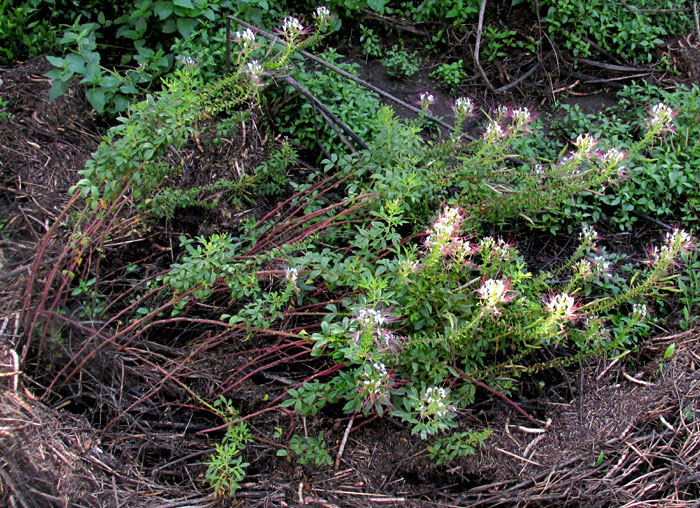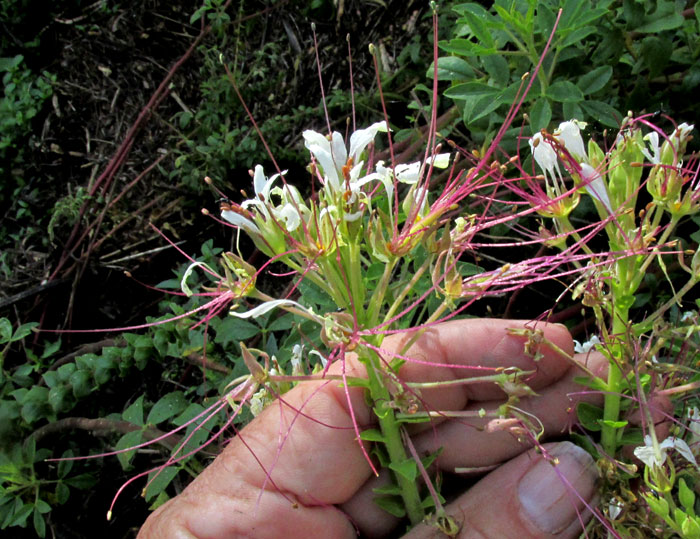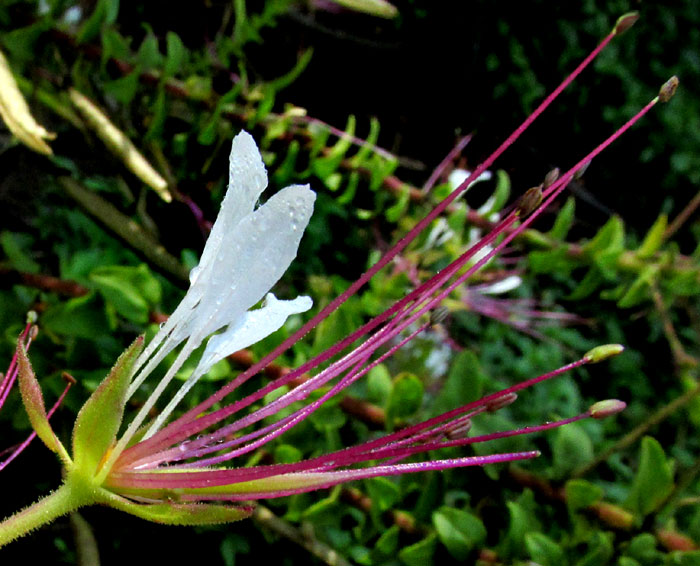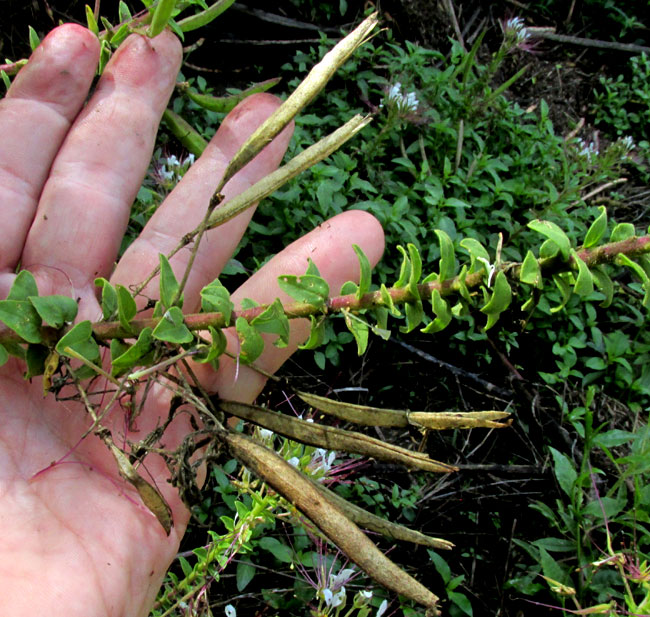Excerpts from Jim Conrad's
Naturalist Newsletter
entry dated September 1, 2022, issued from near Tequisquiapan, elevation about 1,900m (6200 ft), N20.565°, W99.890°, Querétaro state, MÉXICO
MEXICAN CLAMMYWEED

In the weedy, mosquito-rich bottom of a ravine developed along an ancient geological fault line running across agricultural fields, the above bushy, perennial herb had mostly recovered from recent floodwaters. Its stems had been swept to one side, and debris washed from the fields had mounted up on its upstream side. Its new flowers, however, were immaculate:

The flowers' pink stamens were spectacularly long and gracefully upward arching, each tipped with a small, pollen-producing anther. However, the white, disorganized-looking petals seen above weren't your typical wildflower's dainty, symmetrically arranged ones. Still, up close, they were elegant:

Individual flowers displayed a welcome gracefulness amid the mosquitoes, mud and trash washed in from the fields. The petals, still beaded with water from a night's shower, reached upward, while the long, green, slender ovary with its purple style and minute stigma curved downward. The numerous stamens were of varying lengths. This plant's blossoms were very distinctive, and I remembered others seen with the same structure. They were spiderflower species, with flowers and fruits so unique that most experts now assign them to their own Spiderflower Family, the Cleomaceae. Several spiderflower species are known, however, and maybe this would be a different one.

Spiderflower fruits, shown above, hint at the ongoing uncertainty about how to classify these plants. The capsular-type fruits, long and slender with rows of small seeds inside, are very similar to those of many Mustard Family species, and sometimes spiderflowers have been assigned to that family. But the capsules develop atop little stems that developed below the ovary, so the stems aren't normal flower pedicels, but rather special structures called gynophores. For years, the gynophore was the spiderflowers' main ticket for residing in the Caper Family (of pickled capers fame), a family known for its gynophores.
However, early genetic sequencing indicated that spiderflower species were so unique that they deserved their own family, the Cleomaceae. At least for gene-friendly botanists, that's where it stands now, according to the main constantly updated databases of plant name changes.
Here's what a typical leaf on our plants-- smelling mightily of oily muskiness -- looked like:

These plants are much like those seen in the Yucatan, whose similarities you can confirm on our African Spiderflower page. However, on that page, notice that the African Spiderflower's stamens not only are less numerous, but also they arise from atop an elongated gynophore. Our ravine flower's stamens issue from a much shorter gynophore, down in the blossom's bottom.
Most literature found online nowadays, including the Flora of North America, calls our plant Polanisia uniglandulosa, but both "Plants of the World Online" and "World Flora Online" report that as of 2022 the name is CLEOME UNIGLANDULOSA. At least through all the name changes, uniglandulosa has stayed the same, helping us keep track of our plant amid the taxonomic swirl. In English our plant has acquired the name Mexican Clammyweed, "clammyweed" applying to all members of the genus Polanisia. Now that our plant is a Cleome, maybe they'll call it Mexican Spiderflower.
Mexican Clammyweed is native from western Texas and New Mexico south through Mexico to Oaxaca. It occurs in many kinds of disturbed, weedy environments, as well as dry scrub and open areas in general, and even oak, pine and various tropical deciduous types.
Alejandro de Ávila Blomberg in his 2012 work "Yerba del coyote, veneno del perro: la evidencia léxica para identificar plantas en el Códice de la Cruz Badiano" looks at the "Codex de la Cruz Badianus," an herbal from Aztec times, finished in 1552. The Codex details medicinal uses of plants by the ancient Aztecs of central Mexico. It refers to a plant named coyōxihuitl, which the author has identified as Polanisia uniglandulosa, now Cleome uniglandulosa. The Codex reports that the plant was used for "ailments of the anus."